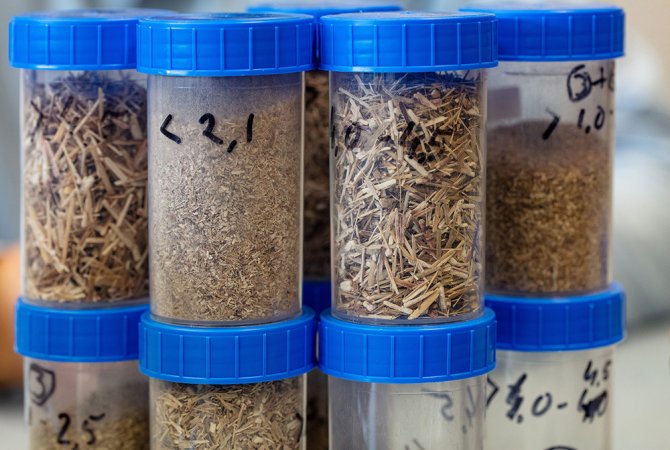
Interview
Mushroom research benefits from large Wageningen collection
Wageningen University & Research (WUR) manages an enormous collection of mushroom-forming fungi. It contains the genetic history of Dutch mushroom cultivation dating back over the past 40 years. The collection and the associated database are invaluable for finding solutions to cultivation problems, data analyst Patrick Hendrickx says. But mushroom-forming fungi are increasingly playing a leading role in other studies, too.
We can now search for solutions in a very targeted way using the stored data and genetic material of historical mushroom strains.
When the Mushroom Experimental Station moved from Horst in Limburg to the Wageningen Campus in 2006, Patrick Hendrickx moved with it. Hendrickx came to the experimental station, part of WUR, back in 1996, straight after leaving Laboratory School. He remembers his first project well: “Mushroom growers in the region were having a lot of trouble at the time with misshapen mushrooms. And now a similar thing is happening again. We can now search for solutions in a very targeted way using the stored data and genetic material of historical mushroom strains. Our collection and the associated database provide us with a solid basis for this. For the problem we are currently working on, we can refer back to almost a hundred strains that have suffered the same problem in the past, including extensive genetic information. That saves us so much time: if you have to start collecting data from scratch, you have already lost at least a year."
Deep-frozen in liquid nitrogen
In the mushroom researchers' lab in Wageningen, the material is stored in liquid nitrogen at -196 °C in large vats. Patrick manages the digital part of the collection. This is important work, because good digital management makes it possible to determine which strain each material in the collection belongs to and how it behaves. All the "passport information" for each fungus is recorded in line with international standards. Hendrickx: “To begin with, we determine which species the fungus belongs to and what traits it has. In addition, the Nagoya protocol stipulates that revenues from genetic sources must benefit the country of origin, so it is also important to record the country the material originates from. Other details we record include the tree or shrub the fungus was found on and who found and supplied the fungus.”
With such a huge variety of species in our collection, Hendrickx and his colleagues can include several different species in their research. "For research into edible mushrooms, for example, we sometimes create ‘family trees’ to see how they are related and which traits do or do not occur in particular species."
Fungi in the circular economy
The Wageningen mushroom collection and associated data are not only of great importance to growers of edible mushrooms, such as button or oyster mushroom growers. “We also use the collection to investigate which fungi are most suitable for converting certain types of biomass. One example is our research into the possibilities of using fungi to break down lignin from biomass flows for biogas. We are also looking into which fungi are effective in converting residual biomass flows into animal feed. Another aspect of our work involves looking at fungal biomaterials and fungal protein. These could lead to fungi playing an important role in the transition to the circular economy, because they can break down substances that bacteria leave behind.” ”

Research in coronavirus times
Although it is still very quiet on campus as a result of the coronavirus restrictions, Hendrickx can still be found there regularly. “The pandemic has delayed many of our investigations. So now we are making every effort to complete all the analyses planned for this year on time. That means that we have to work to a very tight schedule. At the same time, there needs to be peace and quiet in the lab to allow us to get on with our meticulous work. That is why I am often here to see what is feasible. We have become quite adept at working remotely in a short space of time, but for some things you just have to be on site.”